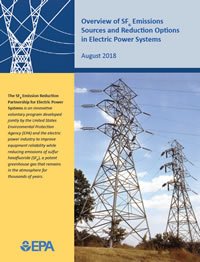SF6 Mitigation Opportunities
Through Partnership Collaboration, EPA works with Partners to identify and develop resources that highlight cost-effective and emerging methods of reducing SF6 emissions. As a result, more than 85% of Partner SF6 emissions have been reduced since the Partnership began in 1999.
Key emission mitigation strategies include:
- upgrading equipment to SF6-free circuit breakers to reduce SF6 use and leaks;
- establishing lifecycle approach for SF6 management;
- ensuring good management of SF6 acquisitions and gas inventory;
- training employees annually in SF6 handling and in using the necessary equipment;
- recycling SF6 gas at equipment servicing or disposal;
- implementing leak detection and repair strategies;
- and decommissioning equipment properly.
Alternatives to SF6
Alternatives to SF6 containing electrical equipment have emerged over the last 10 - 15 years. While lower and medium voltage equipment class alternatives have enjoyed success, higher voltage classes and a wider offering of types continue to be developed. Alternative technologies that do not use SF6 may include, but are not limited to, equipment utilizing vacuum interrupters and alternative fluorinated gases and gas mixtures with lower global warming potential compared to SF6. EPA collaborates with Partners and other industry players to support further development of these SF6 alternative technologies and provide resources to electric utilities when considering upgrading or switching electrical equipment.
Explore Partnership resources on SF6 alternatives.
Learn About Best Practices

In collaboration with Partners and industry stakeholders, EPA has reviewed SF6 emission sources and compiled best practices for mitigating SF6 in electric power systems. These have been developed, tested, and shared over the past decade by participants in EPA's SF6 Emission Reduction Partnership for Electric Power Systems. The following resources provide information about best practices and cost-effective methods of reducing SF6 emissions that can be implemented by the electric power industry.
- Overview of SF6 Emissions Sources and Reduction Options in Electric Power Systems (pdf)
- Reducing SF6 Emissions in Electric Power Systems: Best Practices
View Additional Resources for information on SF6 related regulations, research, and case studies.
